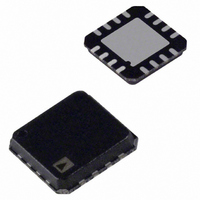AD7879ACPZ-RL Analog Devices Inc, AD7879ACPZ-RL Datasheet - Page 13

AD7879ACPZ-RL
Manufacturer Part Number
AD7879ACPZ-RL
Description
IC ADC 12BIT CTLR TOUCH 16LFCSP
Manufacturer
Analog Devices Inc
Type
Touch Screen Controller: 4-Wire Resistiver
Datasheet
1.AD7879-1ACPZ-RL.pdf
(36 pages)
Specifications of AD7879ACPZ-RL
Resolution (bits)
12 b
Data Interface
I²C
Package / Case
16-LFCSP
Mounting Type
Surface Mount
Voltage - Supply
1.6 V ~ 3.6 V
Operating Temperature
-40°C ~ 85°C
Voltage Supply Source
Single Supply
Sampling Rate (per Second)
105k
Sampling Rate
105kSPS
Supply Voltage Range - Analog
1.6V To 3.6V
Supply Current
480µA
Digital Ic Case Style
CSP
No. Of Pins
16
Lead Free Status / RoHS Status
Lead free / RoHS Compliant
Available stocks
Company
Part Number
Manufacturer
Quantity
Price
Company:
Part Number:
AD7879ACPZ-RL
Manufacturer:
Maxim
Quantity:
50
Figure 23 shows an equivalent circuit of the analog input
structure of the AD7879, showing the touch screen switches,
the main analog multiplexer, the ADC, and the dual 3-to-1
multiplexer that selects the reference source for the ADC.
AUX/VBAT/GPIO
The AD7879 can be set up to automatically convert either
specific input channels or a sequence of channels. The results
of the ADC conversions are stored in the results registers.
When measuring the ancillary analog inputs (AUX, TEMP, or
VBAT), the ADC uses a V
referred to GND.
MEASURING TOUCH SCREEN INPUTS
When measuring the touch screen inputs, it is possible to
measure using V
excitation voltage as the reference and to perform a ratiometric,
differential measurement. The differential method is the default
method and is selected by clearing the SER/ DFR bit (Bit 9 in
Control Register 2) to 0. The single-ended method is selected
by setting this bit to 1.
Single-Ended Method
Figure 24 illustrates the single-ended method for the Y position.
For the X position, the excitation voltage is applied to X+ and
X− and the voltage is measured at Y+.
Figure 24. Single-Ended Conversion of Touch Screen Inputs
X+
Y+
X–
Y–
TEMPERATURE
V
SCREEN
SENSOR
CC
TOUCH
CC
Figure 23. Analog Input Structure
as a reference, or to use the touch screen
GND
Y+
X+
Y–
CC
V
reference and the measurement is
(VIA MUX)
CC
INPUT
INPUT
MUX
IN+
V
ADC
REF
X– Y– GND X+ Y+ V
REF+
REF–
WITH TRACK-AND-HOLD
APPROXIMATION ADC
DUAL 3-TO-1 MUX
12-BIT SUCCESSIVE
REF–
REF+
CC
Rev. 0 | Page 13 of 36
The voltage seen at the input to the ADC in Figure 24 is
The advantage of the single-ended method is that the touch
screen excitation voltage is switched off once the signal is
acquired. Because a screen can draw over 1 mA, this is a
significant consideration for a battery-powered system.
The disadvantage of the single-ended method is that voltage
drops across the switches can introduce errors. Touch screens
can have a total end-to-end resistance ranging from 200 Ω to
900 Ω. By taking the lowest screen resistance of 200 Ω and a
typical switch resistance of 14 Ω, the user can reduce the apparent
excitation voltage to 200/228 × 100 = 87% of its actual value.
In addition, the voltage drop across the low-side switch adds to
the ADC input voltage. This introduces an offset into the input
voltage; thus, it can never reach zero.
Ratiometric Method
The ratiometric method illustrated in Figure 25 shows the negative
input of the ADC reference tied to Y− and the positive input
connected to Y+. Thus, the screen excitation voltage provides
the reference for the ADC. The input of the ADC is connected
to X+ to determine the Y position.
For greater accuracy, the ratiometric method has two significant
advantages. One is that the reference to the ADC is provided
from the actual voltage across the screen; therefore, any voltage
dropped across the switches has no effect. The other advantage
is that because the measurement is ratiometric, it does not
matter if the voltage across the screen varies in the long term.
However, it must not change after the signal has been acquired.
The disadvantage of the ratiometric method is that the screen
must be powered up at all times because it provides the reference
voltage for the ADC.
V
IN
Figure 25. Ratiometric Conversion of Touch Screen Inputs
=
V
CC
×
SCREEN
TOUCH
R
YTOTAL
R
Y
−
GND
Y+
X+
Y–
(VIA MUX)
INPUT
V
CC
ADC
REF+
REF–
AD7879
(1)













